1.LISBOA
On the right bank of the broad Tagus river estuary, the capital of Portugal graciously reclines over rolling hills. This is a spectacular geographical location and does much to explain the cosmopolitan history of the city. Its exceptional natural light, which has long inspired writers, photographs and filmmakers, the brightly coloured buildings straddling the slopes, the striking ochre of the roofs, the tiling on so many facades and the narrow twisting alleys of the medieval districts bestow Lisbon with the peculiar atmosphere of a city perched somewhere between the European north and the Mediterranean south.
Throughout millennia, the superb natural harbour of the Tagus was used by traders and seafarers. Lisbon’s long history begins under the Phoenicians as Alis-Ubbo, before becoming the Roman settlement of Felicita Julia Olisipo in the second century.
With the arrival of the Moors from the 8th century, it was renamed Aschbouna. The city fell to the Portuguese in 1147, when conquered by the first king of Portugal, Afonso Henriques. It became the national capital in 1255.
Wandering its distinctive neighbourhoods, taking the tram through historic neighbourhoods, riding the century-old lifts up and down the steep slopes, taking a boat ride on the Tagus, or even jumping on the metro, itself a veritable underground museum of contemporary Portuguese art, there are so many means to discover the great diversity and cultural depth that Lisbon has to offer.
To the west, close to the mouth of the Tagus, visit Belém with its gardens and monuments to the Lisbon of the Voyages of Discovery now declared UNESCO World Heritage.
Much was rebuilt after the 1755 earthquake. A regular, symmetrical plan was established for the “Baixa (Downtown)” opening it up to both the light and the river. There, you will come across the traditional commerce. There is also the seductive appeal of the Chiado; a neighbourhood evoking the bourgeois tastes of 19th century Lisbon. To the east, the Parque das Nações (Park of Nations) concentrates a huge range of leisure facilities and features the Oceanarium.
By night, the traditional neighbourhoods fall under the spell of Fado, the melancholic style of Portuguese folk music, while a younger crowd flocks to lively, stylish bars of the Docas, down by the river, or the Bairro Alto, adjoining the Chiado.
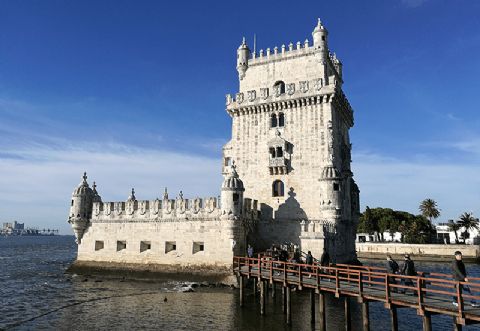
BELÉM TOWER
With almost five centuries of history the Belém Tower is one of the most traditional and historical monuments of the city. The harmony of the decorative elements linked to maritime aspects and the voyages of the navigators is fascinating. But one of the most curious attractions of the tower is a carved rhino being the first in Europe! An additional attraction is the view that it offers both to the river as much of the region of Belém, including the Monument to the Discoveries, the neighboring monument.

MONUMENT TO THE DISCOVERIES
The Monument to the Discoveries is a monument in honor of the era of the Portuguese discoveries and the Portuguese explorers, where you can find an observation platform at the top of the monument that offers panoramic views of Belém.
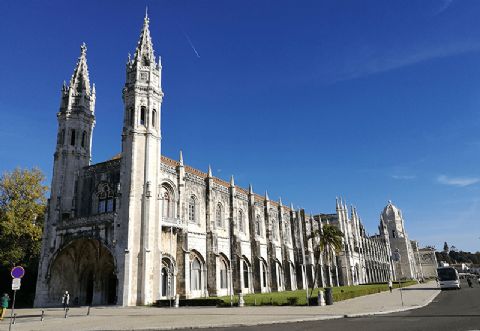
JERÓNIMOS MONASTERY
Classified as a National Monument and inscribed on the UNESCO World Heritage list, the Jerónimos Monastery in Manueline style is one of the main tourist attractions in Lisbon. Highlighted by the architectural wealth as well as the 300 meters long that leaves no one indifferent, it is one of the most impressive examples of religious architecture from around the world

PASTES OF BELEM
Finally we could not forget the ex-libris of Portuguese gastronomy, the famous pastel of Bethlehem. It comes from a recipe very well kept in secret, that makes them so unique where no visit to Bethlehem is considered complete without trying one.
2. MUSEUMS
There are many museums in Lisbon, if you like to explore the beautiful art and history of Portugal, from ancient art to new technologies, these are the museums we recommend for you to start:
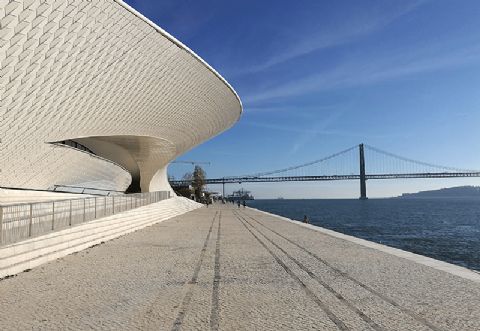
MAAT
The Museum of Art, Architecture and Technology (MAAT) is a project of the EDP Foundation, and operates in a former thermoelectric power station and a new building designed by the British architect Amanda Levete.
With almost three thousand square meters for exhibitions and events, and through a contemporary and international program, this museum addresses the relationship of art with new technologies. It will have a restaurant overlooking the 25 de Abril Bridge, and it is possible to walk on top of the new shell-shaped building with curving and flowing lines.
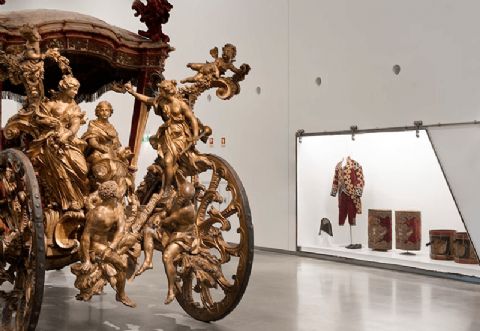
CHARIOT MUSEUM
The Chariot Museum is a museum in Belém. It appears as a cultural equipment but also as a public place. In the words of the architect Paulo Mendes da Rocha “the museum has no door and is related to all sides.”
More than a museum, the project functions as an urban infrastructure, which offers ‘public space’ to the city.
Gathering a unique collection in the world of gala cars and strollers from the 16th to 19th centuries, mostly from the Portuguese Royal House to which vehicles from Church goods and private collections were added, the Chariot Museum presents an excellent set that allows the visitors to understand the technical and artistic evolution of the means of transport of animal traction used by the European courts until the appearance of the car.
3. NEIGHBORHOODS
The neighborhoods are the essence of the city. There’s art and animation in every corner and you cannot ignore the beautiful landscapes and Portuguese architecture.
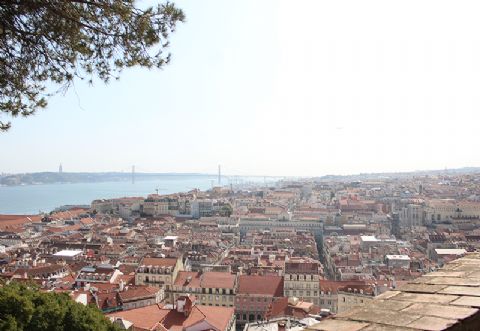
ALFAMA DISTRICT
One of the most famous districts of Lisbon, once home to many fishermen, is still inhabited by Portuguese families. The neighborhood of Alfama is considered the birthplace of Fado where you can find many restaurants and taverns. Lose yourself in the narrow labyrinthine streets of Alfama and discover one of Lisbon’s most charming neighborhoods.
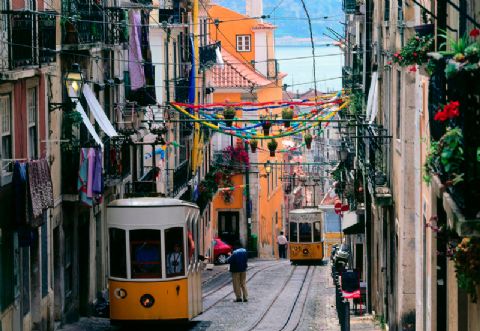
DISTRICT HIGH
The Bairro Alto and surrounding areas are residential areas, so during the day they are quiet, but they are also the nightlife destination of Portuguese and foreigners. Bars, nightclubs and restaurants, there are options for everything in the middle of all the folia, we find one of the oldest and typical neighborhoods of Lisbon.
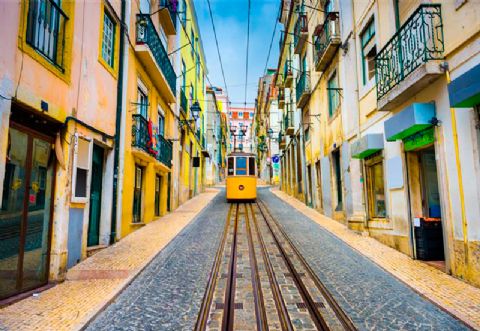
STREET OF BICA
The Rua da Bica de Duarte Belo was considered the most beautiful streets in the world in an online voting made by tourists. To determine the most beautiful streets, the election criteria depended on several factors such as historical relevance, urban animation, landscape or impact caused on visitors.
The main attraction of Bica is the elevator that crosses the street from top to bottom attracting tourists from all corners of the world.
4. MONUMENTS
The monuments in Lisbon are some of the most beautiful monuments in the world every one of them have a meaning and a utility, whit great beauty and elegance witch one of them are going to mark you as you pass by.
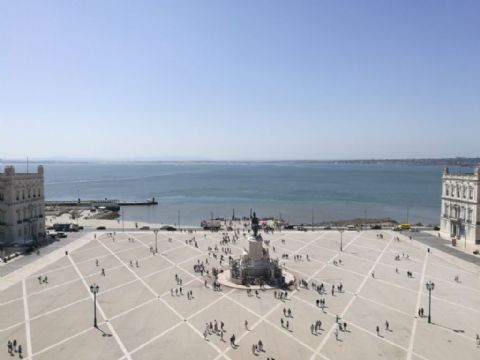
COMMERCIAL / TERRACED PARK SQUARE
The gateway to Rua Augusta and the Baixa de Lisboa, the Praça do Comércio is one of the largest streets in Europe and is located in the center of Lisbon, on the banks of the River Tagus.
There you will find the Arch of Augusta Street, where you can climb to the belvedere to see the Praça do Comércio from the top (which is great). You will also find the Martinho da Arcada café-restaurant, founded in 1782, where Fernando Pessoa, a famous Portuguese writer spent much of his adult life, and the statue of Doctor José I, located right in the center of the square.
It is a great place to discover interesting stories and curiosities about the monuments that are a great setting for a few pictures.
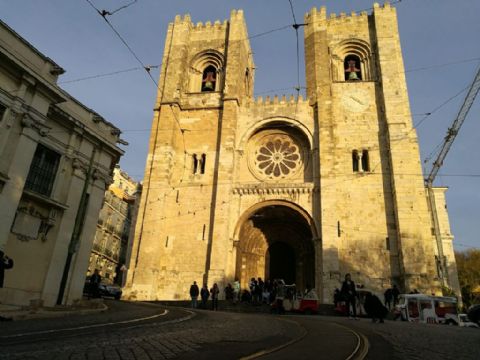
SÉ CATHEDRAL
The Sé Cathedral is one of the oldest medieval monuments in Lisbon. Throughout the times it has undergone numerous changes and for that reason presents itself today with a mixture of architectonic styles due to the reconstructions after the fire that followed the earthquake.
In particular the baptistery, the patriarchal sacristy, the chapel of Bartolomeu Joanes and the cloister, where archaeological excavations were recently held.
5. VIEWPOINTS
The viewpoints over Lisbon promise incredible landscapes for the entire city were you can appreciate the beauty and the incredible dimension of Lisbon.

VIEWPOINT OF GRACE
Although everyone calls it Miradouro da Graça, the official name is Miradouro Sophia de Mello Breyner Andresen.
This mirador under the shade of pine trees attracts young people to its terrace, which offers a fantastic view of the castle and the Tagus.
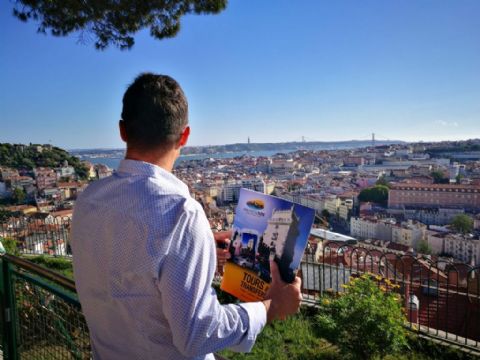
VIEWPOINT OF THE LADY OF THE MOUNT
It is one of the highest points of Lisbon and therefore it is very popular at sunset allowing to contemplate several monuments marked on a tile panel.
It was once one of the biggest secrets of the city, but has been discovered by tourist guides and lovers.
To get here, walk down Rua da Graça from Largo da Graça, and turn left at Rua da Senhora do Monte.
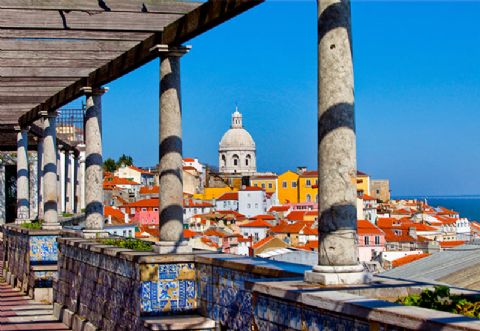
VIEWPOINT OF SANTA LUZIA
With a panoramic view over Alfama this is one of the most romantic corners of Lisbon. On the upper platform you can contemplate the vines that climb the pergola, while on the lower platform you can enjoy the sun next to a water mirror.
In the center of the garden of buganvílias is a bust of Júlio de Castilho, and behind this are two panels of tiles. One illustrates the conquest of St. George’s Castle in 1147 and the other the Praça do Comércio before the earthquake.

VIEWPOINT OF THE CASTELO DE S. JORGE
The Castle of São Jorge offers a privileged and very complete view of the city. From the top we see the roofs of Mouraria up to Martim Moniz.
Passing through Santana hill, through Baixa and São Roque, where the ruins of the Convento do Carmo and the grove of the viewpoint of São Pedro de Alcântara lurk, we can look at the roofs and the narrow streets of Alfama. Passing by the Sé Cathedral, the eyes advance towards the river Tagus.